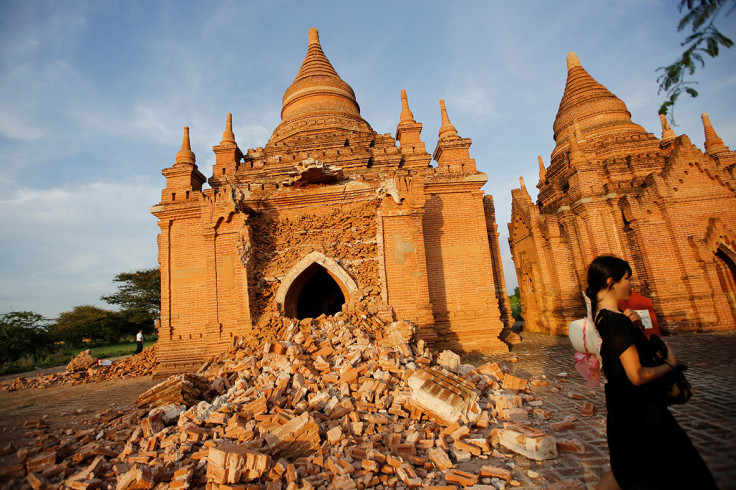Is it possible to predict an earthquake?
Hundreds have been killed after two large earthquakes struck Italy and Myanmar on the same day.
Two big earthquakes struck Europe and Asia on the same day this week, killing hundreds and razing entire towns to the ground.
Rescuers in central Italy are continuing to search for survivors trapped in the rubble of collapsed buildings, after a 6.2 magnitude earthquake struck the Umbria region of the country in the early hours of Wednesday morning. The death toll has surpassed 240, officials have confirmed, with many more people missing.
Hours later, a 6.8 magnitude earthquake hit central Myanmar, damaging historic buildings in the city of Bagan and killing at least one person.
Both countries, Myanmar in particular, are prone to quakes as they are located on major fault lines. Although we know roughly which areas are more likely to experience earthquakes, are they possible to predict?
The short answer is no. "We can't predict individual earthquakes with current knowledge," says Ian Main, a professor of seismology and rock physics at the University of Edinburgh.
"Sadly, and despite a huge effort to find reliable precursors, individual earthquakes still cannot be predicted reliably in advance with current understanding," he says. "This could be because the signals are too small to be seen, or could be an inherent property of the complex and nonlinear dynamics involved in the statistical mechanics of earthquakes."
According to the British Geological Survey, attempts to predict earthquakes have "generally been considered as failures" – and it is "unlikely" that accurate prediction of earthquakes will occur in the future.
This is because unlike volcanoes, earthquakes have an inherently "random element" and express "near-chaotic behaviour" which is impossible to foresee.

There are, however, still ways of monitoring the chances of an earthquake. Many countries with moderate-to-high seismic activity have research programmes which identify possible signs of an impending earthquake. The dilatancy theory allows scientists to measure whether a rock has expanded – or dilated – which is caused by tiny fractures in the rock opening up under stress.
Some earthquakes are preceded by foreshocks. In 2011, geologists from the University of Grenoble, along with Turkish scientists, found a series of foreshocks emanated from the epicentre of the catastrophic 1999 Izmit earthquake in Turkey, around 45 minutes before it hit, killing 17,000 people. However, while foreshocks can warn of an imminent earthquake with a few hours notice, this would not be enough time to prepare and carry out an evacuation.
Instruments are used to measure changes in levels of radon gas, which escapes from cracks in the Earth's crust, as well as electrical and magnetic properties and changes in topography. Seismologists are also able to monitor velocity changes in seismic waves, the shockwaves released by earthquakes.
"Long term monitoring and examination by these sensors is required as some or all of these factors may change due to the opening of cracks prior to the earthquake," the British Geological Survey states.
Scientists have estimated the probability of when an earthquake will strike a region prone to tremors, such as the San Francisco Bay area. This is done by looking at the movement of the Earth's tectonic plates, the location of fault lines and the occurrence patterns of past earthquakes.
As there is no exact way of determining precisely when and where an earthquake will strike next, it is essential that buildings in danger-zones are earthquake-proof.
"Earthquake risk is determined by the combination of hazard, vulnerability and exposure. The hazard indicates the frequency and intensity of earthquakes and represents a physical characteristic of a given geographic area," says Dr Carmine Galasso, a lecturer in earthquake engineering at UCL.
"The vulnerability is a building's potential for damage. The more vulnerable a building is – due to its type, inadequate design, poor quality materials and construction methods, lack of maintenance, the greater the consequences will be," Galasso says. "The exposure is the number of assets exposed to risk, the possibility in other words of damage in economic terms, to cultural heritage or the loss of human lives."
© Copyright IBTimes 2025. All rights reserved.






















